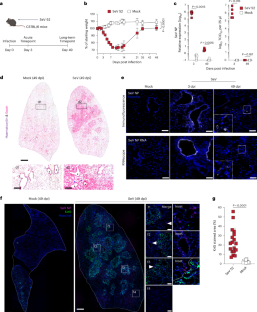2024-10-02 ワシントン大学セントルイス校
<関連情報>
- https://source.washu.edu/2024/10/viruses-found-hiding-in-lungs-immune-cells-long-after-initial-illness/
- https://www.nature.com/articles/s41564-024-01805-8
マウスパラインフルエンザウイルスは慢性肺病理を維持する肺自然免疫細胞内に持続する Murine parainfluenza virus persists in lung innate immune cells sustaining chronic lung pathology
Ítalo Araújo Castro,Yanling Yang,Victoria Gnazzo,Do-Hyun Kim,Steven J. Van Dyken & Carolina B. López
Nature Microbiology Published:02 October 2024
DOI:https://doi.org/10.1038/s41564-024-01805-8

Abstract
Common respiratory viruses, including the human parainfluenza viruses, threaten human health seasonally and associate with the development of chronic lung diseases. Evidence suggests that these viruses can persist, but the sources of viral products in vivo and their impact on chronic respiratory diseases remain unknown. Using the murine parainfluenza virus Sendai, we demonstrate that viral protein and RNA persist in lung macrophages, type 2 innate lymphoid cells (ILC2s) and dendritic cells long after the infectious virus is cleared. Cells containing persistent viral protein expressed Th2 inflammation-related transcriptomic signatures associated with the development of chronic lung diseases, including asthma. Lineage tracing demonstrated that distinct functional groups of cells contribute to the chronic pathology. Importantly, targeted ablation of infected cells significantly ameliorated chronic lung disease. Overall, we identified persistent infection of innate immune cells as a key factor in the progression from acute to chronic lung disease after infection with parainfluenza virus.


